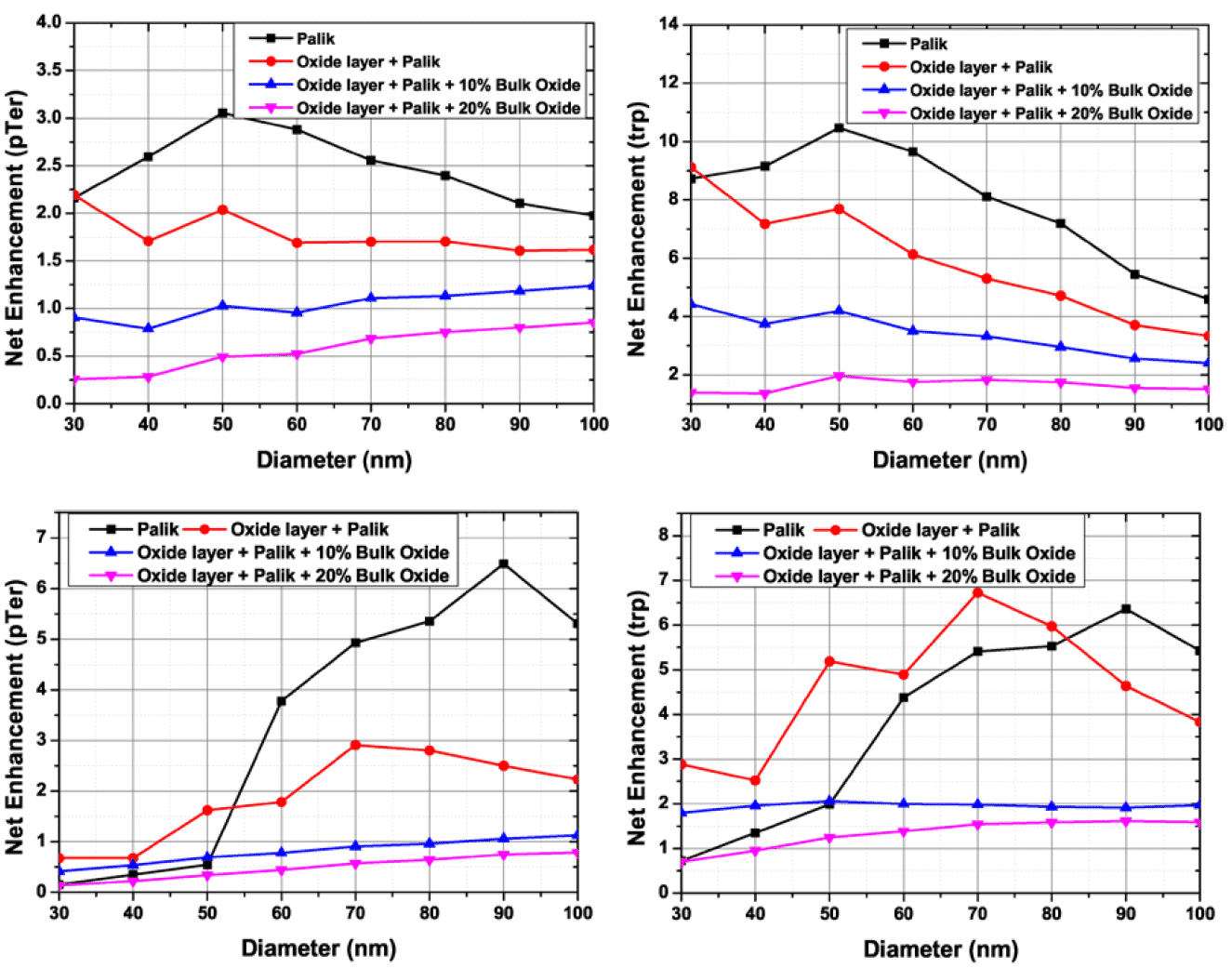
Simulation of UV Fluorescence Enhancement by Al and Mg Nanoapertures
Exploring new plasmonic materials for the Ultraviolet spectral range has generated a surge of interest recently [1]. One of its implications is improving the detection limit of biomolecules who have UV native fluorescence [2]. Aluminum has emerged as a promising UV SPP material and has been used for fluorescence enhancement [3]. Mg has recently been shown to exhibit a higher LSP FOM in the mid-UV spectral range compared to Al [4]. Here, we present thorough numerical studies of various factors that impact fluorescent enhancement/lifetime by Al and Mg nanoapertures and compare the properties of these two materials. In comparison with Al, Mg shows a larger excitation enhancement and Purcell factor under resonance conditions. The resonant wavelength for Mg is shifted about 70nm to the red for the same aperture size compared to Al. We also found that Mg nanoapertures produce greater net enhancement for molecule with higher quantum yield. This finding has real implication as many proteins have low quantum yield [5], and therefore Al may be more suitable. Finally we found that oxidization has negative effect on excitation enhancement, but its effect on radiative rate and Purcell factor can be either positive or negative depending on the native QY and aperture size. In conclusion, our simulations have studied different factors that exist in experimental conditions such as oxidization and non-ideal dye, and thus has practical value in designing nanoapertures for fluorescence applications.
Net enhancement for p-terphenyl (left) and tryptophan (right) in Al (top) and Mg (bottom) nanoapertures comprised of different oxidation state. Excitation is at 270 nm and emission is at 340 nm.

Reference
[1] M. McMahon, et al., Physical Chemistry Chemical Physics : PCCP, vol. 15, no. 15, pp. 5415-23, 2013
[2] R. Lakowicz, et al., Biochemical and Biophysical Research Communications, vol. 286, no. 5, pp. 875-9, 2001.
[3] Ray, et al., Analytical Chemistry, vol. 79, no. 17, pp. 6480-7, 2007.
[4] Appusamy, et al., Materials Science and Engineering: B, vol. 181, no. d, pp. 77-85, 2014.
[5] D. Fasman, Ed., Practical Handbook of Biochemistry and Molecular Biology. CRC Press, 1989.
Blair@ece.utah.edu
Powered by Eventact EMS